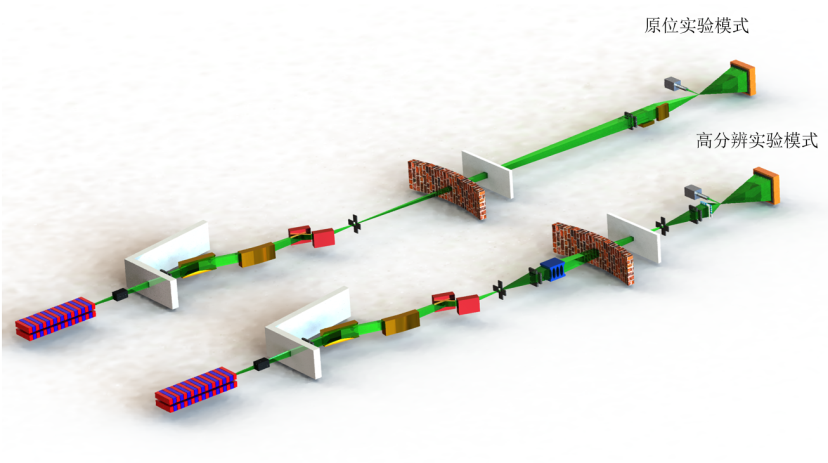The hard X-ray nanoprobe multimodal imaging beamline (NAMI) is dedicated to the nano-scale in-situ scientific research. The users can perform multimodal characterization on different samples with a combination of a variety of experimental techniques in the NAMI beamline with unprecedented spatial resolution, hence allow them to understand the structure, strain, kinetic effects and the chemical states inside the sample at the nano and atomic scales.
The working energy of NAMI beamline energy ranges from 5-23 keV, with an energy resolution of 10-4. The beamline operates at two different modes: the ultimate focus mode and the in-situ experimental mode. The ultimate focus mode offers a smallest possible focus less than 10nm, with the working distance between 0.5~1mm, and the flux higher than 1×109phs/s@10keV at the sample position(the current of the storage ring is 200mA, the emittance is 60pm?rad); the in-situ experimental mode provides a minimum focus size of 50nm, with the working distance between 40~50mm, and the flux more than 1×1011phs/s@10keV at the sample position.
The main experimental methods are high resolution X-Ray Fluorescence imaging (n-XRF), Ptychography, the nano X-ray diffraction (n-XRD) and the nano X-ray Absorption Near Edge Structure spectroscopy (n-XANES).
The total length of NAMI beamline is more than 200m. The beamline is one of three longest beamlines locate outside of the experimental hall in the Phase I project. The insertion device is a 3m long Cryo-cooling Permanent Magnet Undulator (CPMU) locates in a low beta section of the storage ring. The major optical components of the beamline contains a water-cooling horizontal deflecting mirror, a Bent mirror, a horizontal deflecting Double Crystal Monochromator and a set ofCompound Refractive Lens. In the end station, Multilayer Laue lenses (MLL) and KB mirror are used as the nanofocusing optics in the two modes respectively.
One key point of the nanoprobe experiments is how to keep the relative position between the sample and the nano beam, which requires the environment of the experiment hutch to be extremely stable. The hutch of NAMI beamline will be built on an isolated concrete foundation, and equipped with an air conditioning system to keep the temperature in the hutch stable with a fluctuation smaller than ±0.05 °C within 12 h.
Director: Chang Guangcai (86-010-88236710,changgc@ihep.ac.cn)

Hard X-ray nanoprobe microprobe beamline optics top view
